Changing a watch strap or bracelet is a valuable skill for any watch enthusiast, offering a way to refresh a timepiece’s look or improve its functionality. Whether driven by the need to suit a specific activity, enhance aesthetic appeal, match an occasion, complement a dress style, or alleviate discomfort, swapping out a strap or bracelet can transform your watch. This technical guide provides a detailed, step-by-step process on how to change watch strap and bracelets, including single-piece straps, while emphasizing the importance of using the right tools and verifying compatibility. With careful execution, you can perform this task at home, ensuring your watch remains both functional and stylish.
Why Change a Watch Strap or Bracelet?
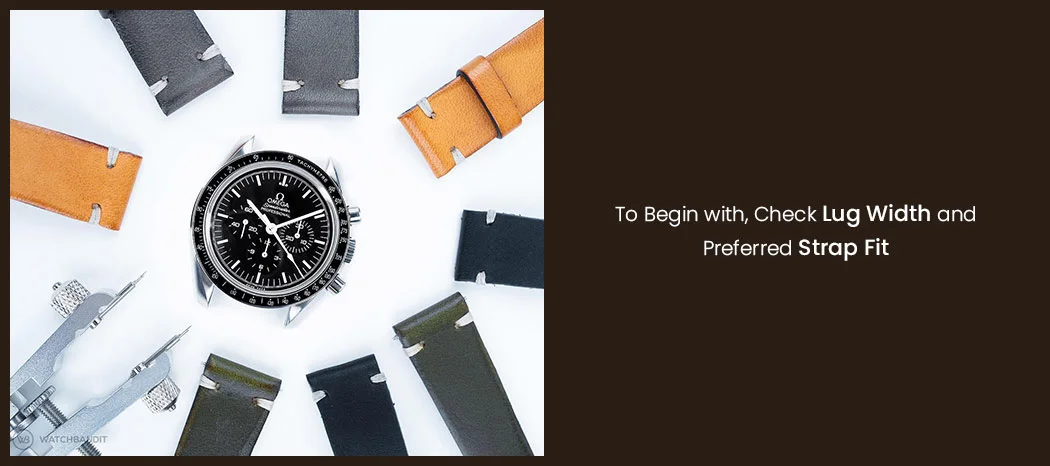
Before we learn how to change watch strap, we must know that replacing a watch strap or bracelet serves multiple purposes, each tied to practical or personal preferences. For active individuals, a strap change might be necessary to suit specific activities, such as swapping a leather strap for a durable rubber one during sports or outdoor adventures. Aesthetically, a new strap can revitalize a watch’s appearance, giving it a fresh, modern, or classic look depending on the material and color chosen. Occasions also dictate strap choices; a sleek leather strap might be ideal for formal events, while a NATO strap suits casual outings. For dress purposes, aligning the strap with your wardrobe enhances the watch’s harmony with your style. Finally, discomfort from a worn-out, ill-fitting, or heavy strap can be resolved by switching to a more comfortable option, such as a lightweight mesh or soft leather strap. Understanding these motivations helps determine the best strap for your needs.
Verifying Strap or Bracelet Compatibility
Before attempting to change watch strap or bracelet, confirm that your watch allows for interchangeable bands. Most watches feature standard lugs—metal protrusions on the watch case with holes to hold spring bars—making strap replacement straightforward. However, some timepieces have integrated bracelets or proprietary connections, which may limit compatibility to specific straps or require professional assistance. To verify compatibility, measure the lug width using a digital caliper or ruler. Ensure the replacement strap or bracelet matches this width and has compatible end fittings (straight or curved). Additionally, check if the watch uses standard spring bars, quick-release pins, or screw pins, as this affects the tools and process required. If the watch has non-standard connections, consult a professional to avoid damaging the case or lugs.
Essential Tools for Changing Watch Straps and Bracelets
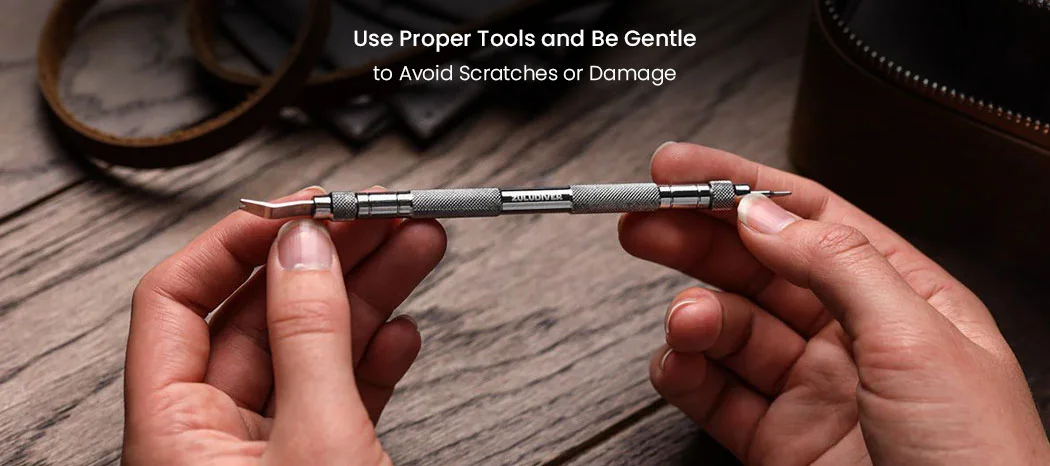
Performing a strap or bracelet change requires specific tools to ensure precision and prevent damage to the watch. While the exact tools depend on the type of strap or bracelet, the following are commonly needed:
- Spring Bar Tool: A thin, forked tool used to compress and remove spring bars, essential for most strap and bracelet changes.
- Screwdriver: Necessary for bracelets with screw pins or micro-adjustment clasps.
- Tweezers: Useful for handling small components like spring bars or pins to avoid loss.
- Soft Cloth or Pad: Protects the watch face and case from scratches during the process.
- Pin Pusher or Hammer: Required for metal bracelets with friction pins or collars.
- Bracelet Holder: Stabilizes metal bracelets during link removal or adjustment.
- Magnifier: Optional but helpful for inspecting small lug holes or ensuring proper spring bar alignment.
Having these tools ready ensures a smooth process and minimizes the risk of scratches or lost components. Always work on a clean, stable surface to keep small parts secure.
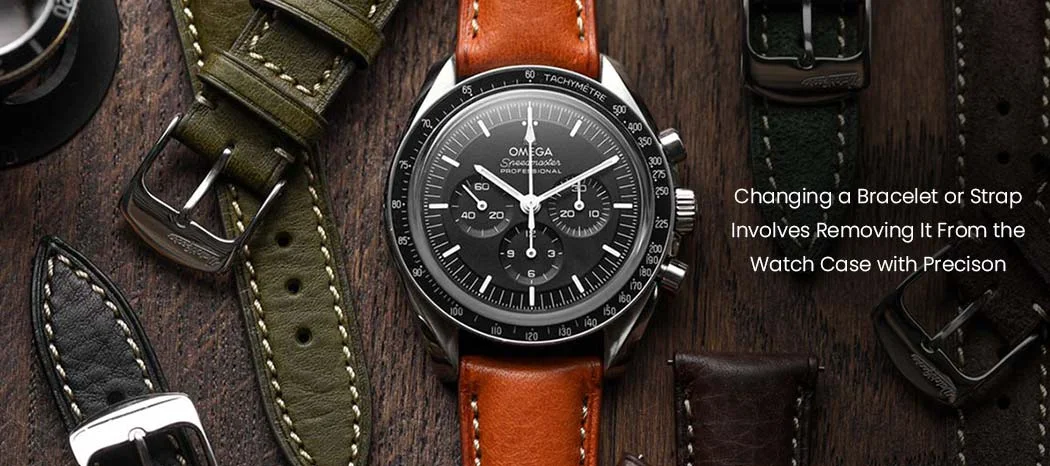
How to Change a Two-Piece Watch Strap
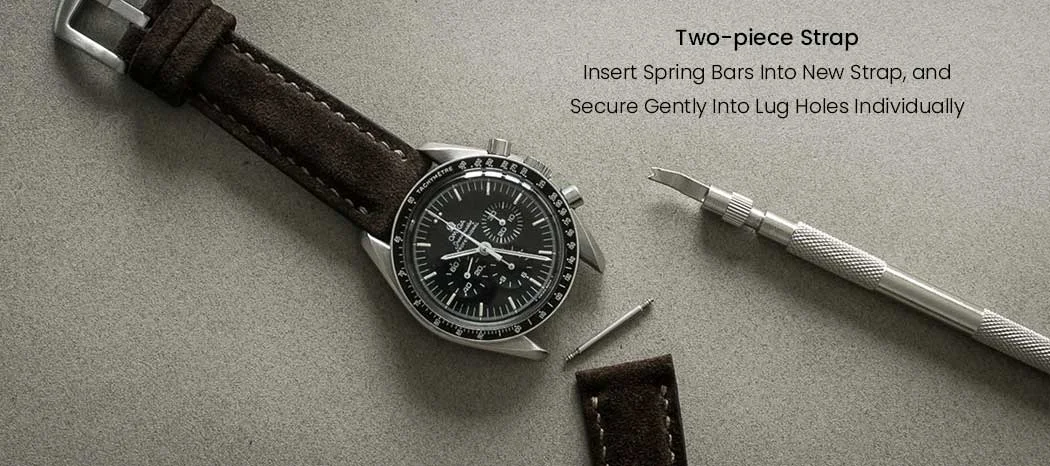
Two-piece watch straps, typically made of leather, rubber, or canvas, consist of a short piece with a buckle and a longer piece with adjustment holes. To change a two-piece strap, follow these steps:
- Prepare the Workspace: Place the watch face-down on a soft cloth or padded mat to protect the dial and case. Ensure the strap is unbuckled, with the lugs accessible.
- Remove the Old Strap: Using the forked end of a spring bar tool, insert it between the strap and the lug, targeting the spring bar’s flange (a raised ridge). Apply gentle pressure inward (toward the strap) to compress the spring bar, then pull it downward to release it from the lug hole. Repeat on the other side of the strap. Remove the spring bar from the strap and set it aside, taking care not to lose it.
- Inspect and Clean: Check the spring bars for damage or wear; replace them if they no longer compress properly. Clean the lugs with a soft cloth to remove dirt or debris.
- Install the New Strap: Insert the spring bar into the new strap’s end holes, ensuring it is centered. Position one end of the spring bar into a lug hole, then use the spring bar tool to compress the other end and guide it into the opposite lug hole. Repeat for the second strap piece, ensuring the buckle is at the 12 o’clock position and the holed strap at the 6 o’clock position for comfortable wear.
- Secure and Test: Gently tug both strap ends to confirm the spring bars are securely seated. Wipe the watch with a microfiber cloth to remove smudges.
This process typically takes 5–10 minutes and requires patience to avoid scratching the lugs. While most brands provide quick-switch systems in their straps to enable easy and risk-free replacement, it is recommended to be very careful while doing so, since you are dealing with tiny parts. In case you discover any issue or mistakenly cause any damage to any part, visit an authorized service center like Kapoor Time Crafter
How to Change a Metal Watch Bracelet
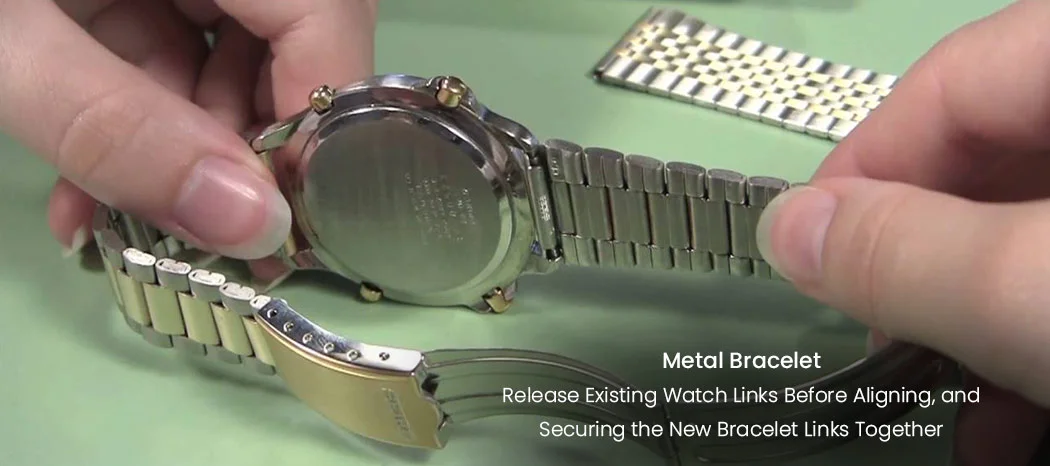
Metal bracelets, often made of stainless steel or titanium, use links secured by spring bars, screw pins, or friction pins. Changing a bracelet involves removing it from the watch case and, if necessary, adjusting its length.
- Remove the Bracelet: Place the watch face-down on a soft cloth. If the bracelet has a micro-adjustment clasp, use a spring bar tool or screwdriver to release it for better access. Locate the end-links (where the bracelet meets the lugs) and identify the spring bars or screws. For spring bars, use the forked end of the spring bar tool to compress the bar within the lug recesses, wiggling the end-link free. For screw pins, use a 1.4mm–1.8mm screwdriver to loosen and remove the screws. Repeat for both sides.
- Adjust the Bracelet (if needed): If the replacement bracelet requires sizing, identify removable links (marked by arrows or U/L pins). For pin-and-collar bracelets, use a pin pusher to push out pins in the direction of the arrows, then reconnect the links by inserting the pin and collar. For screw-based bracelets, use a screwdriver to remove screws, adjust the number of links, and reassemble. Ensure even link removal from both sides for balance.
- Install the New Bracelet: Insert spring bars or screws into the new bracelet’s end-links. Align the end-link with the lug holes, then secure the spring bars or tighten the screws. Check for a firm connection by gently pulling the bracelet.
- Clean and Finalize: Wipe the watch and bracelet to remove fingerprints or debris. Adjust the clasp for a snug fit if applicable.
This process is more complex than a strap change due to the bracelet’s rigid structure and potential need for sizing. The process should be performed gently, visit a service center if you notice any sort of damage.
How to Change a Single-piece Watch Strap
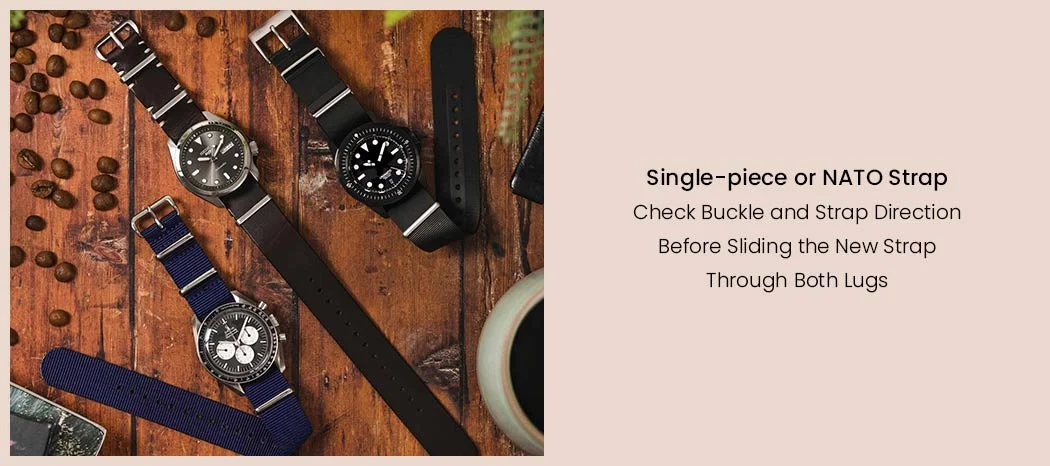
Single-piece straps, such as NATO or slip-thru styles, are continuous bands that thread through the watch’s lugs. They are popular for their durability and ease of use, especially for active lifestyles.
- Remove the Old Strap: Place the watch face-down on a soft cloth. For a NATO strap, unthread the strap from the keeper and slide it out from the spring bars at the 6 o’clock and 12 o’clock positions. If spring bars are present, use a spring bar tool to remove them by compressing and pulling them out of the lug holes. For slip-thru straps without spring bars, simply slide the strap through the lugs to remove it.
- Prepare the New Strap: Identify the long end of the new single-piece strap (with holes or adjustment points). For NATO straps, ensure the buckle is oriented correctly (typically at the 12 o’clock position when worn).
- Thread the New Strap: Starting at the 12 o’clock lug, thread the long end of the strap from the front of the watch to the back, through the gap between the spring bar and case. Pull it through until the watch case is positioned near the topmost keeper. Thread the strap through the 6 o’clock lug from back to front, ensuring it lies flat without twisting. For NATO straps, fold the long end through the keeper on the short side and pull it tight.
- Adjust and Secure: Center the watch case between the lugs for comfort. Slide the strap through any additional keepers or loops, then buckle it to test the fit. Ensure the strap is not twisted, as this can cause discomfort.
Single-piece straps are simpler to change, especially those with quick-release systems, but require careful threading to avoid twisting.
When to Seek Professional Assistance
Always remember, when you are working with your luxury watch whether you are trying to do something mechanical or simply change watch strap, you are dealing with tiny parts and should do it with utmost care. If you encounter issues during the strap or bracelet change—such as stubborn spring bars, scratched lugs, or difficulty sizing a bracelet—reach out to an authorised service center like Kapoor Time Crafter. The experienced technicians can handle complex cases, proprietary connections, or delicate vintage watches, ensuring no damage occurs. Professional assistance is also recommended if you lose a spring bar, damage a screw, or are unsure about compatibility. Contacting a trusted watch service provider guarantees precision and preserves your timepiece’s integrity.
Kapoor Time Crafter
Knowing how to change watch strap or bracelet is a practical skill that enables you to seamlessly change watch strap whatever your need may be, whether you want your watch to complement your dress or just replace an old worn-out strap. When you change watch strap, it also enhances a timepiece’s functionality and style, complementing regular watch servicing to maintain its pristine condition. While changing a strap is a simple process and can be performed at home, one should always be careful that any other mechanical task that might look simple including lubricating your watch should be done by professionals at an authorised service center. At Kapoor Time Crafter, a premier watch service center in New Delhi, certified technicians trained ensure precision in services like movement overhauls and ultrasonic cleaning for 24 iconic brands. Just as swapping a strap refreshes a watch’s aesthetic or comfort, professional servicing preserves its mechanical integrity. For those new to strap changes or facing challenges, Kapoor Time Crafter’s expertise guarantees your timepiece remains a reliable, elegant companion for years. Visit Kapoor Watch Co. to book an appointment or seek any professional advice.

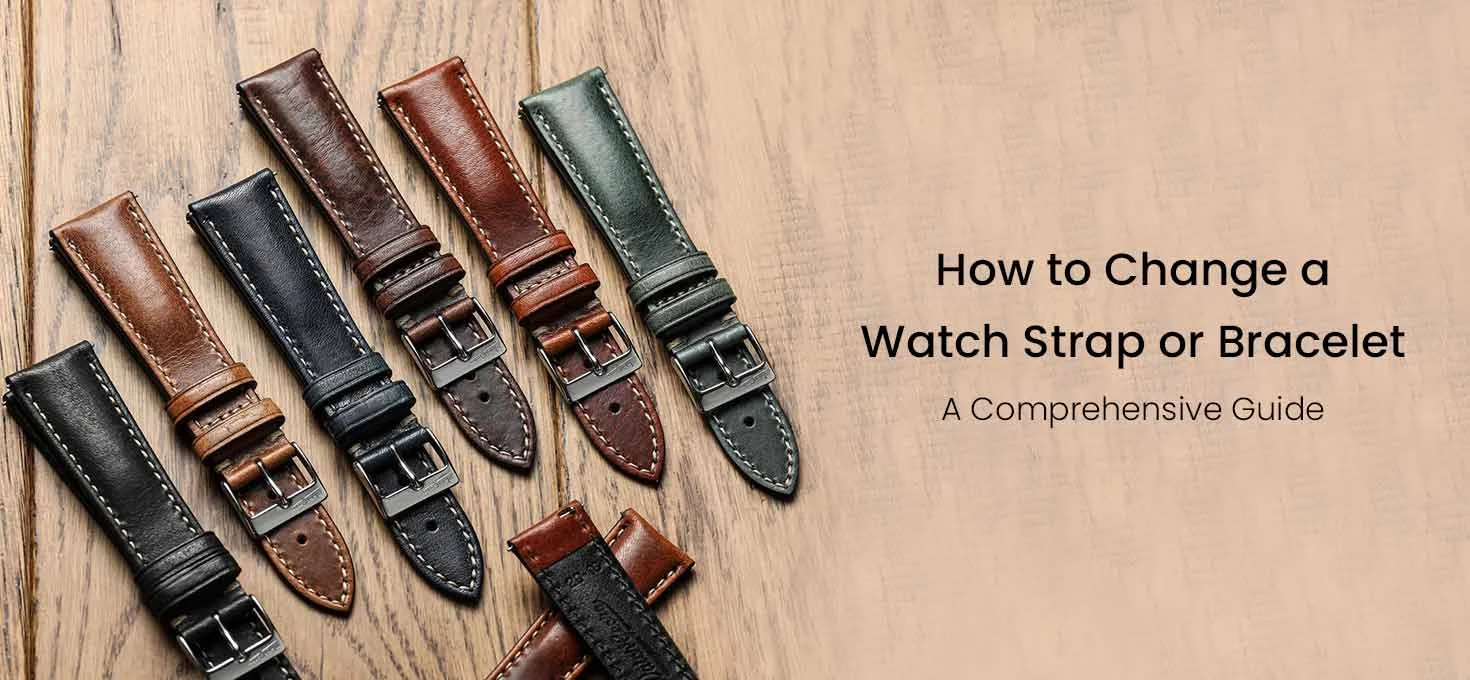



Recent Posts
Recent Comments
Archives